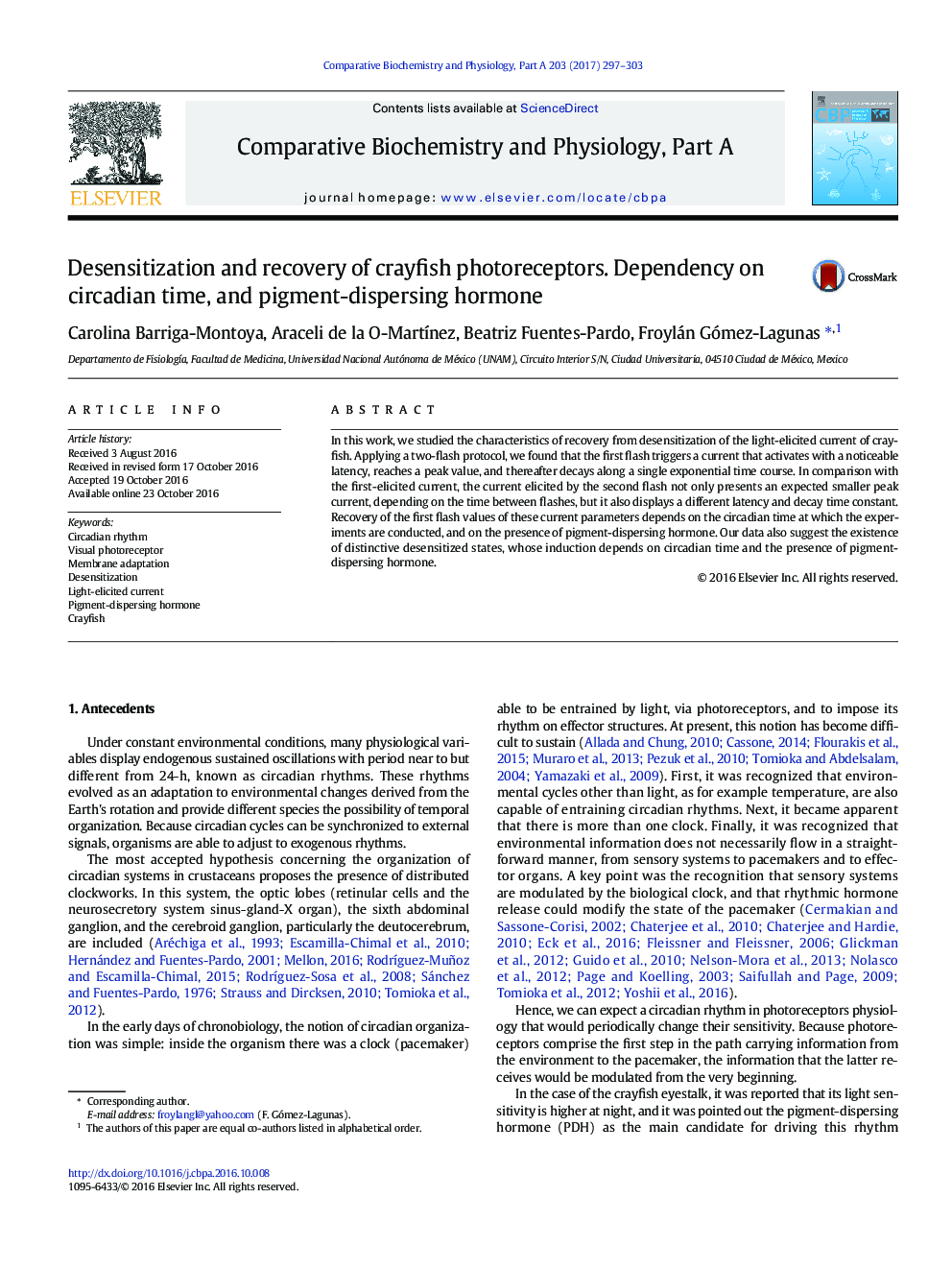| Article ID | Journal | Published Year | Pages | File Type |
|---|---|---|---|---|
| 8318442 | Comparative Biochemistry and Physiology Part A: Molecular & Integrative Physiology | 2017 | 7 Pages |
Abstract
In this work, we studied the characteristics of recovery from desensitization of the light-elicited current of crayfish. Applying a two-flash protocol, we found that the first flash triggers a current that activates with a noticeable latency, reaches a peak value, and thereafter decays along a single exponential time course. In comparison with the first-elicited current, the current elicited by the second flash not only presents an expected smaller peak current, depending on the time between flashes, but it also displays a different latency and decay time constant. Recovery of the first flash values of these current parameters depends on the circadian time at which the experiments are conducted, and on the presence of pigment-dispersing hormone. Our data also suggest the existence of distinctive desensitized states, whose induction depends on circadian time and the presence of pigment-dispersing hormone.
Related Topics
Life Sciences
Biochemistry, Genetics and Molecular Biology
Biochemistry
Authors
Carolina Barriga-Montoya, Araceli de la O-MartÃnez, Beatriz Fuentes-Pardo, Froylán Gómez-Lagunas,
